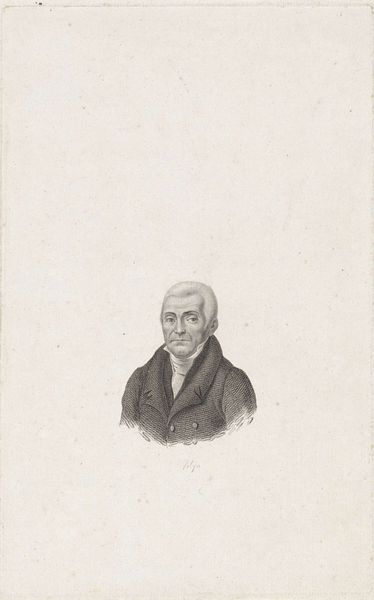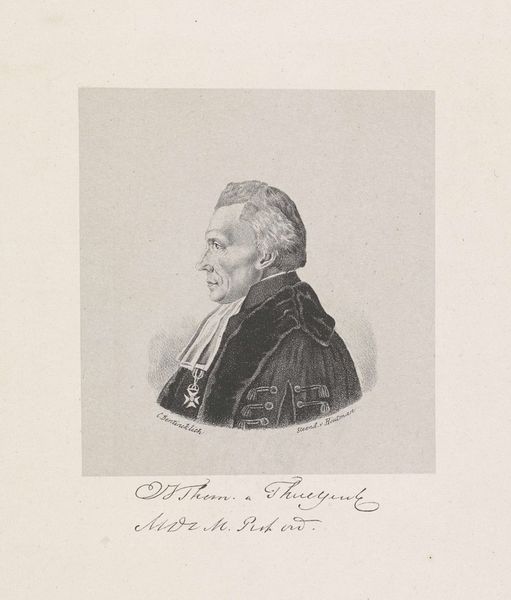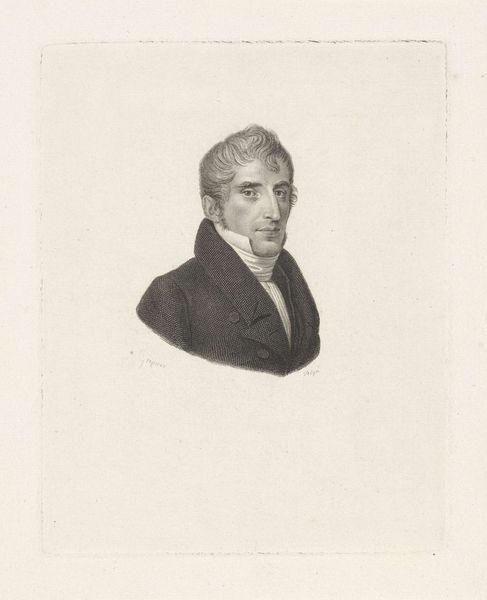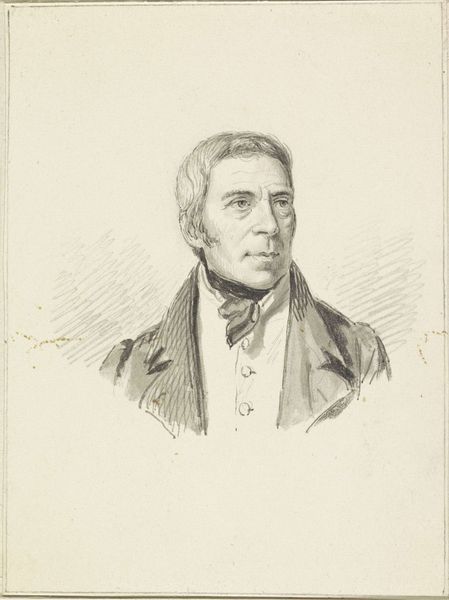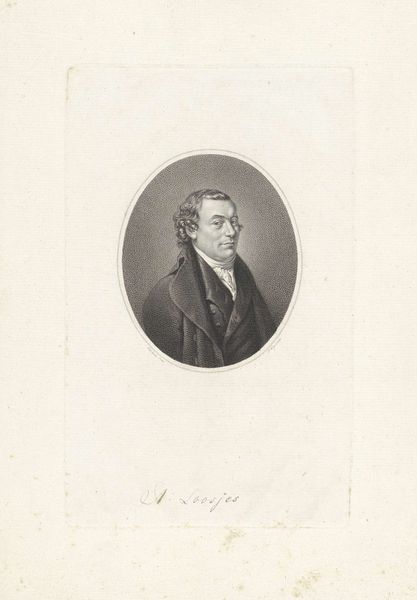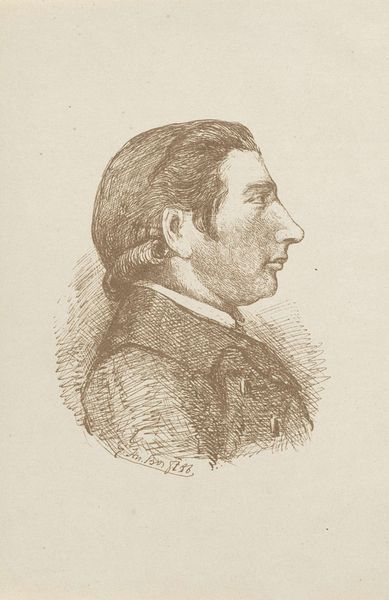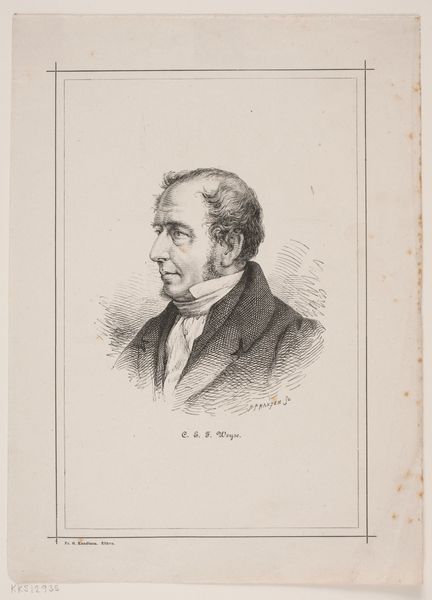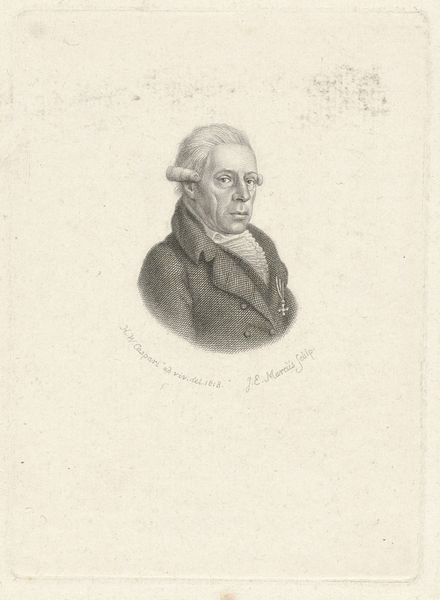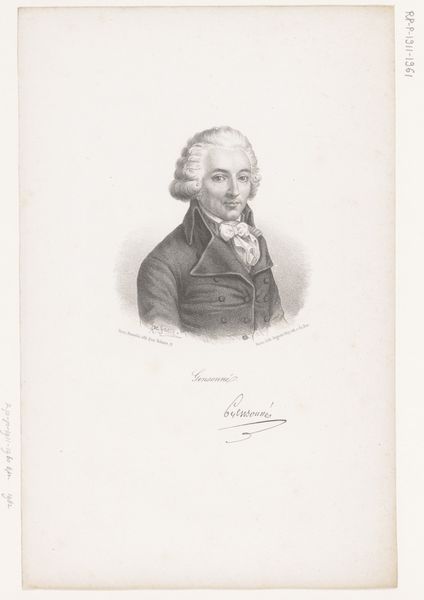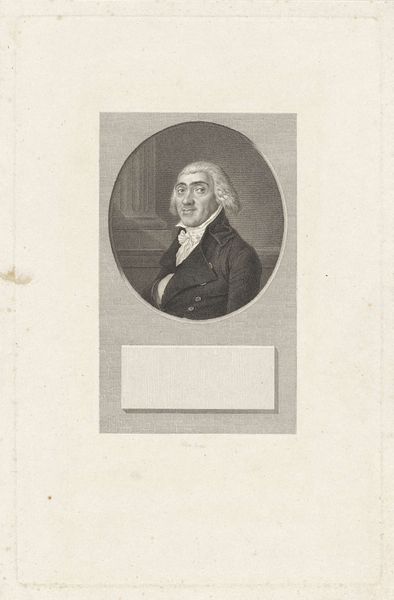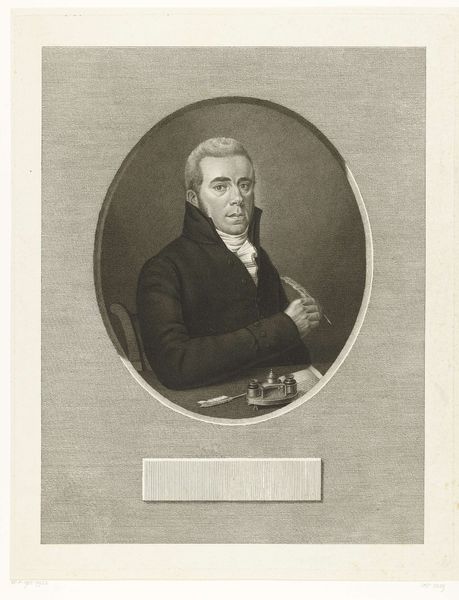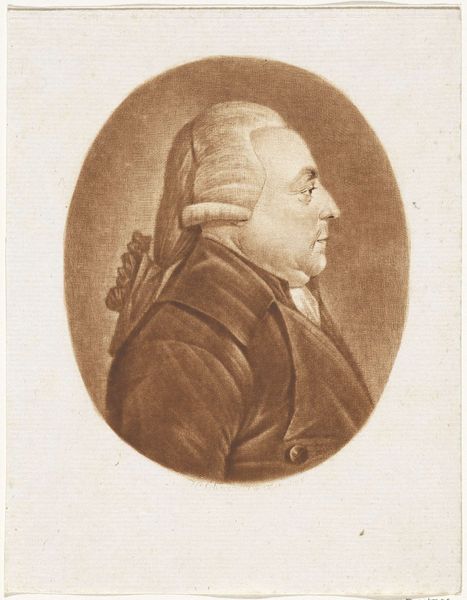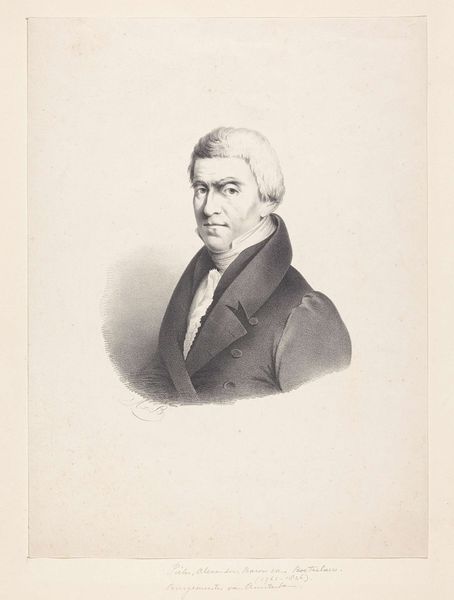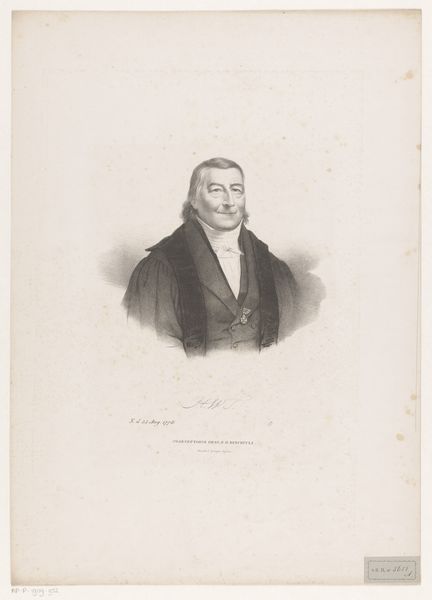
Dimensions: height 60 mm, width 59 mm
Copyright: Rijks Museum: Open Domain
Curator: Before us is "Portret van een man met een pruik," or "Portrait of a Man with a Wig," a graphite drawing created sometime between 1836 and 1912 and attributed to Isaac Weissenbruch. It is currently housed at the Rijksmuseum. Editor: There's something austere and rigid about this image, a severity captured in the sharp, precise lines of the graphite. The stark contrast creates a sort of detached formality, wouldn't you agree? Curator: Indeed. Observe how Weissenbruch employed a cross-hatching technique, especially in the coat, to model form and create subtle tonal variations. Notice also how he carefully delineated each curl of the wig and the fine lace detailing around the collar. It's all about the formal, outward appearance, rigidly composed. Editor: It's interesting to consider the wig itself. Think of the labor involved, the specialized craft required to produce such an object. Wigs of this nature weren't merely adornments, but symbols of status, requiring considerable resources, time, and skill, signifying class and profession. Curator: Quite right, and look at how that symbol functions within the portrait. The wig acts as a clear signifier, framing the face within this structure to further enhance the composition. This visual construction emphasizes an idea of social authority. It's quite strategic. Editor: But beyond status, I find myself considering the discomfort – the materials, the heat. A powdered wig represents constraints and the sacrifices demanded for social ascendance. The labor is not merely that of creation, but also of constant maintenance and wear. Curator: Your reading certainly enriches the symbolic implications beyond pure formalism. But focusing on the image itself, you have this balance between detail and generalization, characteristic of neoclassical portraiture; the specific physiognomy contrasted with generalized social identity. Editor: The contrast is thought provoking, and how each choice represents class and expectations of the time the drawing represents. The physical constraints and labor that the portrait cannot directly reflect makes the art all the more interesting to contemplate. Curator: Perhaps a starting point, or at the very least, one that brings together form and concept in an illuminating and complementary way. Editor: Precisely. Thank you.
Comments
No comments
Be the first to comment and join the conversation on the ultimate creative platform.
